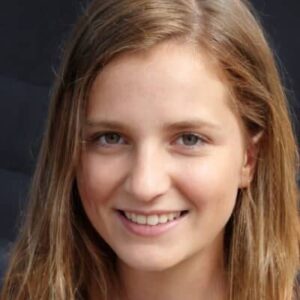
Tartar And Plaque:Remove Methods Without A Dentist
Tartar and plaque, known as dental calculus, form on teeth when plaque accumulates and starts to harden. Not only is tartar visually unappealing, but it

Do you know just how many germs are living on your toothbrush right now? Studies show that the average toothbrush contains over 50 million bacteria including Streptococcus, E.coli, and Candida albicans.
Yuck! With each use, your toothbrush heads pick up oral bacteria from your mouth and also accumulate germs from storage in damp bathroom environments. These germs rapidly multiply and can lead to gum disease, tooth decay, and infection if left on your brush.
Fortunately, there is an effective and easy way to sanitize your toothbrush each day – using an ultraviolet (UV) toothbrush sanitizer. These innovative devices utilize UV-C light to eliminate up to 99% of microorganisms on your toothbrush bristles.
In just minutes, a UV sanitizer irradiates your entire toothbrush head to destroy bacteria and viruses. This ensures that each time you brush, you aren’t just spreading germs back into your mouth.
Intrigued and want to learn more? Keep reading to understand how UV sanitizers work and why you need one in your bathroom today.
Our toothbrushes collect germs from our mouths, hands, and humid bathrooms, which then rapidly multiply if not properly sanitized.
Our toothbrushes are a hotbed for bacterial growth and contamination. Studies have detected over 50 million bacteria living on the average toothbrush.
The moist, porous bristles provide the ideal conditions for germs like streptococcus, E. coli, and candida fungi to thrive and replicate. Toothbrushes in use also harbor viruses like herpes simplex, hepatitis B, and norovirus.
The longer you use a toothbrush, the more bacteria it accumulates. Proper daily disinfection is key to preventing excessive germ buildup on your toothbrush.
While brushing helps clean your teeth, it also inevitably transfers bacteria and germs from your mouth back onto the toothbrush. Each time you brush, oral microbes like streptococcus mutans, a culprit of tooth decay, stick to the bristles.
Viruses present in your mouth also get deposited on the brush. Even dental plaque and food debris left on the bristles become breeding grounds for more germs to develop.
The bristles easily trap and spread these germs every time you use the brush. Proper disinfection is key to stopping this spread.
The humid environment inside toothbrush holders and bathroom cabinets allows germs to thrive. Toothbrush holders easily collect moisture and droplets from handwashing and brushing.
This warm, damp environment encourages bacterial and fungal growth. The germs then spread back onto the brush bristles while resting in the holder.
Standing water also accumulates inside the holder, further promoting contamination. Storing toothbrushes improperly in non-ventilated holders or medicine cabinets fosters this rapid germ and mold accumulation.
Many people store their toothbrushes improperly, leading to excessive bacterial growth. Toothbrushes stored covered up or upright in dark, humid environments like medicine cabinets or shower caddies allow germs to rapidly accumulate between uses.
Failure to completely dry and air out the bristles before covering or capping the brush head also encourages germ and mold growth.
Storing toothbrushes tightly packed together or near dirty sink areas can also transfer germs. Always allow your toothbrush to air dry thoroughly before putting it away to prevent harmful germ accumulation.
Sanitizing your toothbrush daily with UV light eliminates harmful germs and bacteria for optimal oral hygiene through its ability to sanitize the entire brush head more effectively and conveniently than just air drying.
UV-C light destroys microorganisms by disrupting their cellular DNA and RNA, preventing further growth and replication. The optimal germicidal wavelength is 253.7 nanometers.
Exposure to UV-C light for just a few minutes can eliminate up to 99% of common bacteria and viruses found on toothbrush bristles, including streptococcus, E. coli, and candida. UV irradiation essentially damages the germs beyond repair.
Unlike other sanitizing methods, UV light is able to penetrate and disinfect all surfaces of the toothbrush head, not just the tops or bottoms of the bristles.
The UV rays reach the sides, underside, and crevices that harbor germs and bacteria. This reduces the overall bacterial load on the brush.
UV sanitizers use reflectors to diffuse the UV rays and bathe the entire brush head in germ-killing light. This ensures no part of the brush remains untouched or contaminated after the sanitizing cycle.
Air drying your toothbrush between uses is not enough to fully sanitize it. While air drying removes some surface moisture, it does not actively kill germs or disinfect.
UV light, on the other hand, penetrates deeper and destroys bacteria, viruses, and fungi at the cellular level through DNA/RNA damage. UV sanitizers also fully dry your brush while irradiating it.
The combination of drying plus UV exposure provides potent antibacterial results you won’t get from air drying alone. UV sanitizing is a more thorough, proactive way to eliminate microbes.
UV toothbrush sanitizers provide a quick, effective way to sanitize that easily fits into your daily routine. The automated process allows you to sanitize with the simple touch of a button or timer and takes just a few minutes.
Newer models sanitize in as little as 60 seconds. The hands-free operation promotes daily use since it requires minimal time and effort.
Portable, battery-powered options also allow easy sanitizing while traveling. Convenient UV units eliminate any excuse not to make daily toothbrush disinfection a habit.
When selecting a UV toothbrush sanitizer, look for one that accommodates different brush heads, emits the optimal 253.7nm UV wavelength, has automatic on/off functions, and offers portability.
Choose a sanitizer with an interior sanitizing chamber wide and long enough to accommodate the head of your toothbrush, whether it has a larger brush head, orthodontic brush head, or children’s brush head.
The cavity should allow clearance on all sides for the UV light to penetrate. If the chamber is too tight, areas of the brush may be blocked from exposure.
Look for a unit labeled as universally fitting all toothbrush head sizes or measure your brush head first.
Verify that the UV sanitizer emits UV-C light at 253.7 nanometers, the optimal wavelength for destroying bacteria, viruses, and other microorganisms. This wavelength disrupts DNA and RNA, preventing replication.
Avoid cheaper models that use generic LED lights rather than true germicidal UV-C bulbs. The product description should clearly state the UV wavelength to ensure it provides effective disinfection.
Also, look for trusted brand names known for quality UV sanitizing products.
Look for a UV toothbrush sanitizer with automatic sensors or timers that allow hands-free operation. Units with motion sensors automatically activate when you insert your toothbrush and shut the lid.
Timer functions let you set the optimal sanitizing duration so the unit runs automatically. This ensures the full sanitizing cycle is completed once started.
Models without automatic controls require manual timing and turning the unit on and off, which can undermine consistent sanitizing.
For travel, choose a UV toothbrush sanitizer with a compact, portable design. Units powered by batteries allow use anywhere, without having to plug in.
Sleek, lightweight designs easily pack in luggage and travel bags. Some models come with protective carry cases.
Portable keychain models are also available to attach to your bag or purse. Having a portable sanitizer allows you to maintain your oral hygiene routine while on the go.
Using a UV toothbrush sanitizer involves inserting just the brush head inside, running a complete sanitizing cycle, and proper unit maintenance.
When using your UV toothbrush sanitizer, insert only the head of the toothbrush into the sanitizing chamber, leaving the handle outside. UV light can damage the eyes, so close the lid securely.
Position the head upright and centered, allowing UV rays to access all sides. Avoid overpacking in the chamber, which can block light exposure.
Sanitizers with motion sensors activate once you close the lid to begin the cycle.
The average UV toothbrush sanitizing cycle takes 5-10 minutes to fully disinfect the brush head. Newer models may take as little as 60 seconds.
Run one complete cycle peruse to eliminate bacteria. Avoid interrupting the cycle before it’s finished.
Sanitizers with automatic timers ensure the full cleaning duration once activated. For optimal results, make sanitizing part of your daily oral care routine after each brushing session.
To keep your UV toothbrush sanitizer working properly, regularly wipe out the sanitizing chamber with alcohol to disinfect and prevent mold growth.
Replace the UV bulb annually for maximum germ-killing efficiency, or sooner if Output is noticeably diminished. Avoid using abrasive cleaners or soap inside the unit, as residue can block UV rays.
Check that motion sensors are kept clean and unblocked. Follow all maintenance recommendations from the manufacturer. Proper care ensures your sanitizer provides consistent, effective sanitizing.
Our toothbrushes harbor millions of harmful germs that can lead to oral health issues if left unchecked. Fortunately, using an ultraviolet toothbrush sanitizer provides an easy, convenient way to eliminate 99% of the bacteria, viruses, and fungi that accumulate on your toothbrush after each use.
Simply place your toothbrush head in the sanitizing chamber for 5-10 minutes per day to reap the benefits of UV disinfection. UV sanitizers outperform basic air drying methods and ensure every surface of your brush head gets irradiated to destroy germs.
Considering how quickly germs multiply in the moist, dark environment of toothbrush holders, investing in a quality UV sanitizer is a wise idea.
Don’t jeopardize your dental hygiene with a germ-laden toothbrush. Instead, make the smart choice and keep your toothbrush fresh, clean, and germ-free with the help of an effective ultraviolet toothbrush sanitizer in your bathroom. Your smile will thank you.


Tartar and plaque, known as dental calculus, form on teeth when plaque accumulates and starts to harden. Not only is tartar visually unappealing, but it

We are often contacted by customers complaining about a Sonicare toothbrush not charging. A charging issue is a common problem and can sometimes be misdiagnosed

Opting for an electric toothbrush for sensitive teeth can help alleviate discomfort and further protect against gum recession. But which model is ideal for those

Have you learned how to use an electric toothbrush? It’s crucial to know not just for electricity but for any toothbrush type. Even though electric

Tartar and plaque, known as dental calculus, form on teeth when plaque accumulates and starts to harden. Not only is tartar visually unappealing, but it

We are often contacted by customers complaining about a Sonicare toothbrush not charging. A charging issue is a common problem and can sometimes be misdiagnosed

Opting for an electric toothbrush for sensitive teeth can help alleviate discomfort and further protect against gum recession. But which model is ideal for those

Have you learned how to use an electric toothbrush? It’s crucial to know not just for electricity but for any toothbrush type. Even though electric
Copyright © 2025 toothbrushsanitizerholder. All Rights Reserved.